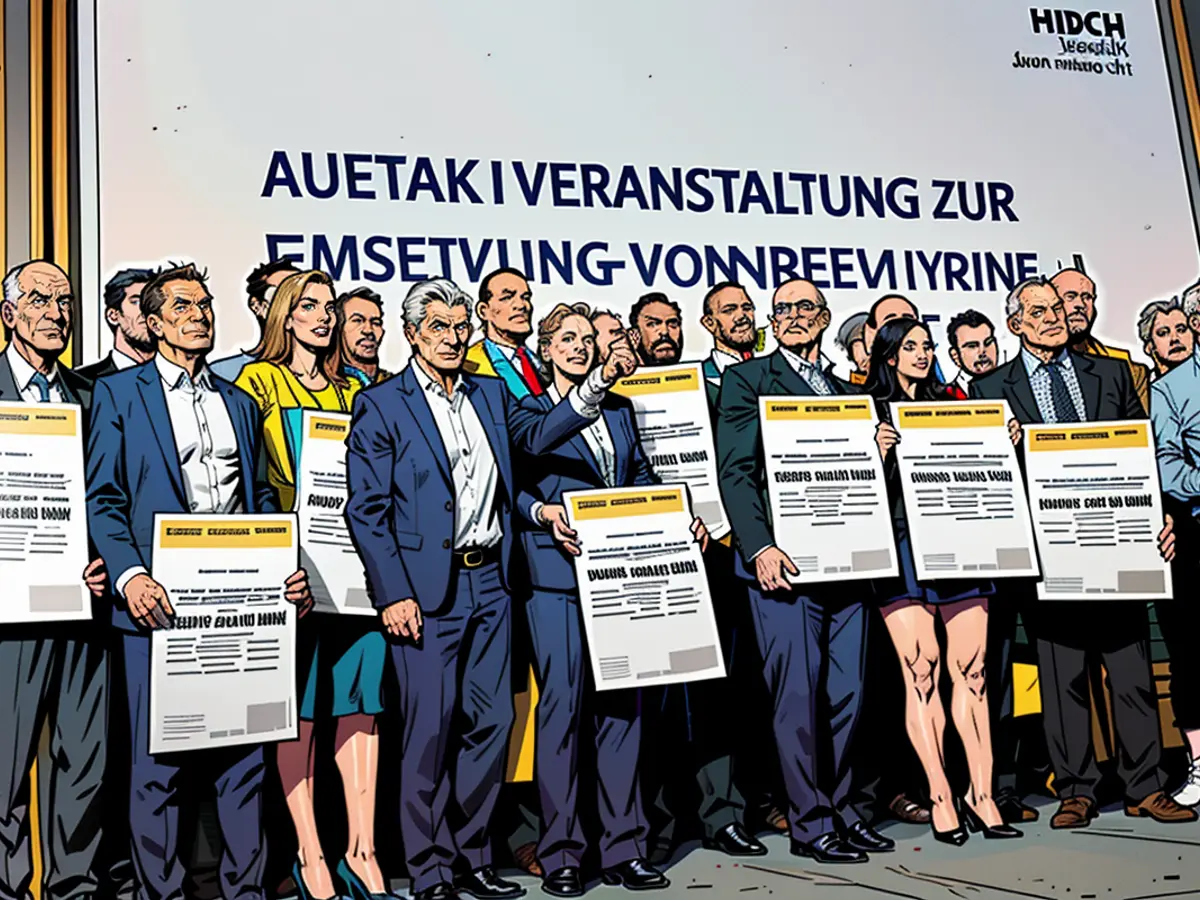Hydrogen - 540 Million Euro Funding for Hydrogen Projects in MV
Plans for several large-scale green Hydrogen production facilities in Mecklenburg-Vorpommern have taken an important step forward. Federal Economics Minister Robert Habeck (Greens) handed over funding decisions in the three-digit million range for four projects, as the Schwerin Economic Ministry announced. In total, 22 projects nationwide will receive 4.6 billion Euro in funding.
In MV, specifically, the construction of a 100 Megawatt production plant (Electrolyser) at H2Apex in Rostock-Laage and another equally large plant on the site of the coal power plant in the Rostock Harbor are underway. The latter is planned to be expanded to a Gigawatt capacity by 2030 and will also supply heat to the Hanseatic City, according to the Schwerin Economic Ministry. The company Enertrag is reportedly planning to build a 55-Megawatt plant. Moreover, Ontras received a funding decision for the construction of a hydrogen pipeline from Rostock via Greifswald to Berlin, Brandenburg, and Saxony.
The four projects in the northeast will receive a total of 540 million Euro in funding, according to the ministry. Of this, the state will contribute 30% (162 million Euro) and the federal government 70% (378 million Euro). With this, investments of around 700 million Euro will be supported in total.
H2Apex expects to invest around 213 million Euro and announced that the federal government will contribute 117 million Euro and Mecklenburg-Vorpommern 50.2 million Euro. The company expects annual sales in the high double-digit million range from hydrogen, heat, and CO2 certificate sales. Starting in 2027, "significant quantities" of hydrogen from MV could be transported to the Berlin metropolitan area, Eisenhüttenstadt and Leuna, as well as to all major agglomerations in Germany. The capacity of the plant is 7,500 tons of hydrogen per year.
Import via Lubmin
Mecklenburg-Vorpommern is also to become an important landing site for hydrogen imports. Norwegian company Høegh-LNG (Oslo) and the German Regas are planning, according to their own statements, the world's first floating import terminal for the conversion of green ammonia into hydrogen. The terminal is expected to go into operation at the beginning of 2026 and to inject 30,000 tons of hydrogen into the grid annually.
Green produced ammonia is to be delivered by tanker and converted into hydrogen in a floating conversion plant (Cracker). The hydrogen is then to be transported in one of the two existing, from Lubmin to the south leading pipelines. The pipeline was originally built for the transport of Russian natural gas. Now, it is to be converted and become part of the new German hydrogen core network. Hydrogen is considered green when it is produced using renewable energy. Hydrogen is considered essential for the economic transition towards climate neutrality.
Mecklenburg-Vorpommern demands four pipelines
Mecklenburg-Vorpommern's Economic State Secretary Ines Jesse (SPD) called for the development of four hydrogen pipelines for the northeast: a north-south connection from Rostock via Pritzwalk towards the south, a north-south connection from Lubmin, an east-west connection between Rostock and the Lubmin/Wrangelsburg area, and an east-west connection from the Lübz area to Hamburg. The production sites of hydrogen and the import points must be connected with the future major consumers and hydrogen storage facilities, explained Jesse.
- The Federal Economics Minister, Robert Habeck, from Berlin, provided significant funding for four hydrogen production projects in Mecklenburg-Vorpommern.
- One of the projects includes a 100 Megawatt hydrogen production plant at H2Apex in Rostock-Laage, which will receive funding from both the federal government and Mecklenburg-Vorpommern.
- In Rostock Harbor, a coal power plant site is being planned to expand to a Gigawatt capacity by 2030, supplying heat to Rostock and contributing to Germany's hydrogen core network.
- The construction of a 55-Megawatt hydrogen plant is reportedly planned by Enertrag, while Ontras receives funding for a hydrogen pipeline from Rostock to Berlin, Brandenburg, and Saxony.
- The state of Mecklenburg-Vorpommern will contribute 30% of the funding for these projects, while the majority comes from the federal government's BMWi.
- Mecklenburg-Vorpommern is also set to become an important landing site for hydrogen imports, with plans for a floating import terminal in Lubmin, converting green ammonia into hydrogen.
- The Norwegian company Høegh-LNG and German Regas aim to operate the terminal, injecting 30,000 tons of hydrogen into the grid annually and reducing Germany's dependence on natural gas.








